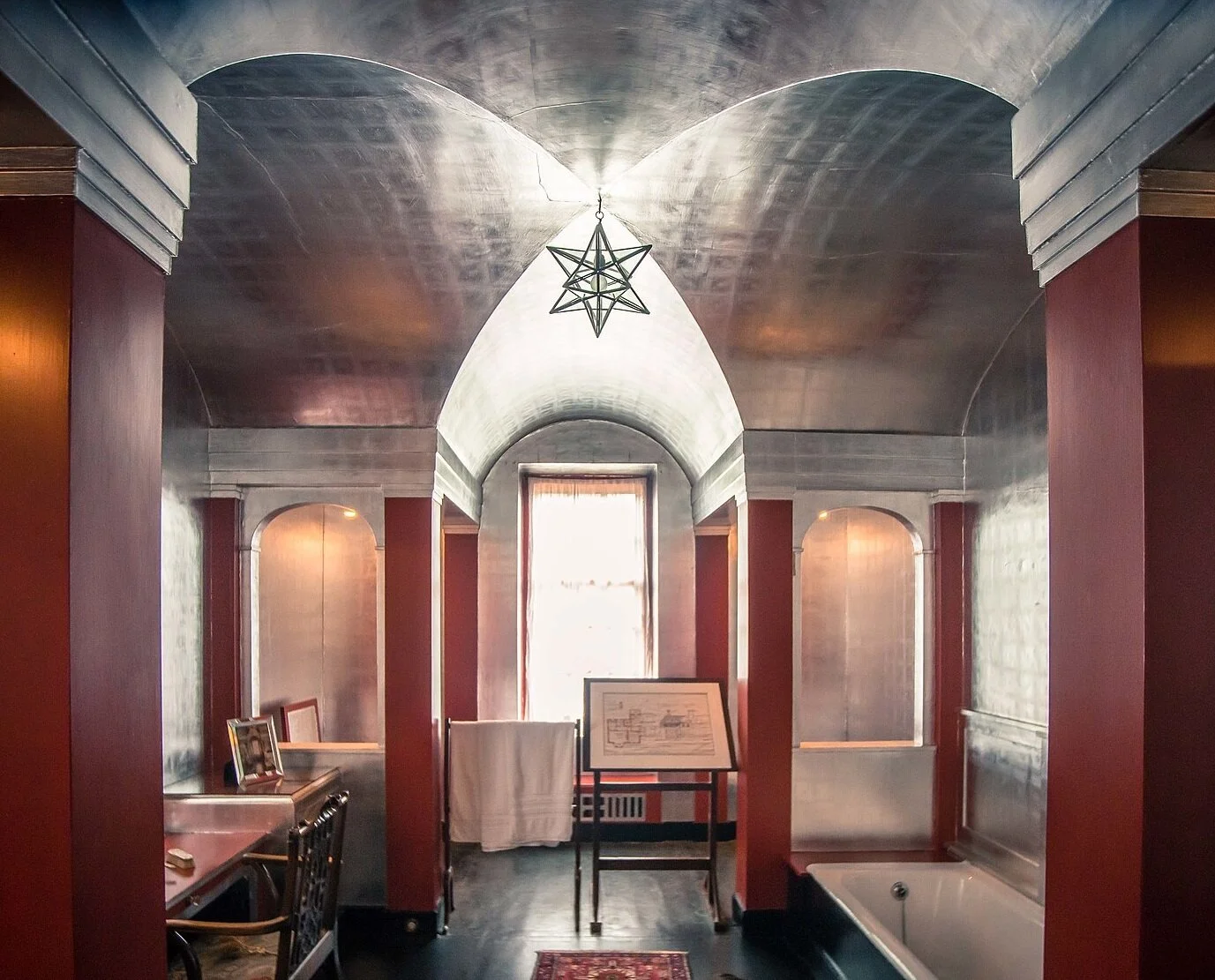Week 13: Wroxton Heath to Leek Wootton
It is officially autumn here in northern Colorado, but you’d never know it to look at the weather: unseasonably warm days into the 80s, with warm gusty winds as well. In fact, as I write this on Sunday afternoon, we’re under a Red Flag Warning: winds of 35 miles per hour, gusting into the 50 mph range.
As of this morning, the fire had grown by 8,308 acres since last week… and I’m guessing with these insane winds, by tonight it may have grown even more. And with ongoing days of raining ash and smoky air, my virtual run from Land’s End to John O’Groats continues to be a virtual row, from the machine in my garage.
This week, Denver Post photographer Helen H. Richardson had an opportunity to photograph the Cameron Peak Fire from the air. The photos are striking, and demonstrate in a more visceral way what it means when nearly 134,559 acres burns.
The Cameron Peak Fire from above, on October 5 - Helen H. Richardson, The Denver Post
The Cameron Peak Fire from above, on October 5 - Helen H. Richardson, The Denver Post
The Cameron Peak Fire from above, on October 5 - Helen H. Richardson, The Denver Post
The Cameron Peak Fire from above, on October 5 - Helen H. Richardson, The Denver Post
Hoping for rain in tinder-dry northern Colorado, let’s get back to rainy Great Britain…
A Cotswold landscape of rolling hills. Photo by Saffron Blaze.
We begin this week by crossing through an upper part of the Cotswolds Area of Natural Beauty. This area of rolling hills over a bedrock of Jurassic limestone is a hub for walkers and nature-lovers. It also represents unique habitat for animals; the rare Duke of Burgundy Butterfly exists in only a few locations now, but the Cotswolds AONB is one of them.
After we pass through the AONB, we will pause to visit two grand houses. The first, Upton House and Gardens, is a property now owned by the National Trust, but has mainly been a family home and hunting lodge.
Upton House, photo by Martin Evans
An art deco bathroom at Upton House. Photo by wikimedia user BsOu10e01.
Built about 1695, much of the house we see today was built or renovated in the 1920s. Some of the interiors offer very shiny examples of the art deco style.
Many travelers visit Upton House for two reasons: first, it has a huge art collection, which is displayed throughout the house for members of the public… sort of like walking through a furnished art museum. And second, the gardens of Upton House are expansive and beautiful. They offer an intriguing contrast: some are highly manicured gardens, while other parts are wildlife-friendly expanses of native plants that imagine what these lands might have looked like without any human intervention.
Just up the road from Upton House and Gardens, we come to Ettington Park. Though the neo-gothic building currently on the site was constructed in the mid-17th century and renovated throughout the mid-19th century, the Shirley family (the owners) are mentioned as occupying property here back to the Domesday Book, and given its proximity to the River Stour, it is thought that people have lived here for more than 2,000 years.
If you’ve seen the 1963 classic “The Haunting,” the very scary movie directed by Robert Wise and based on Shirley Jackson’s story, Ettington Park might look familiar, as it stood in for Hill House. Perhaps “those who walk there” don’t “walk alone” after all, as the hotel itself claims it is one of the most haunted buildings in the U.K.
"Hill House" as envisioned by Robert Wise.
Next, we cross the River Avon, and make our way into Stratford-upon-Avon, best known for being the birthplace of William Shakespeare. Here, the Royal Shakespeare Company keeps the Shakespearean theatre tradition alive through performances at the Royal Shakespeare Theatre. The theatre in use today is a fairly modern building, renovated in 2010, but it replaces predecessor theatre buildings from 1879 and 1932. Some of the world’s finest actors have worked in the Company at one time or another.
The Royal Shakespeare Theatre, as seen from the River Avon. Photo by Wikimedia user DeFacto.
Five historic properties relating to Shakespeare’s life have been conserved, and are open to the public. They include Shakespeare’s birthplace (also his childhood home); Hall’s Croft (believed to be the house of Shakespeare's daughter Susanna and her husband, Dr. John Hall); Anne Hathaway’s Cottage (a “cottage” of twelve rooms and several bedrooms, where Shakespeare’s wife grew up); Shakespeare’s New Place (where he and Anne lived during the prime of Shakespeare’s career); and Mary Arden’s farm (the childhood home of Shakespeare’s mother).
Shakespeare’s birthplace
But Stratford was an important regional hub long before Shakespeare’s time. Its name, from the Old English words for “street” and “ford” reflects its geographic situation as a place where one could cross the River Avon. The Romans used the ford here, and Stratford connected into the Fosse Way, a Roman thoroughfare from Exeter to Lincoln, passing through Bath and Leicester. Since 1196 Stratford has been a market town, where people across the region came to exchange goods and services.
Stratford-upon-Avon’s public library and information centre
Stratford’s public library, for instance, dates from the 15th century… so it had already stood for more than 100 years by the time Shakespeare was born in 1564.
Charlecote Park, with its ornate Tudor chimneys.
As we leave Stratford and continue to make our way north to Scotland, we pass by another grand home: Charlecote Park. As with Upton House, one of the main reasons people visit is to enjoy the gardens, many of which are cultivated in a “wilderness style.” The Lucy family owned the land since 1247 and the first home was built here in 1558 (Queen Elizabeth I spent the night in a room that now serves as the drawing room!). But the home tourists walk through today dates mainly from the 1820s and 1830s.
Warwick Castle with the River Avon in the foreground. Photo by Steven Gale.
The last site we’ll visit this week is Warwick Castle, which along with Stonehenge, the Tower of London, and Edinburgh Castle, is one of the best-known historic sites in Britain. But in contrast to other sites we’ve explored over the past several weeks which are run by organizations with an educational focus, like English Heritage or the National Trust, Warwick Castle is owned by a capital firm, the Prestbury Group, and operated by Merlin Entertainments, a for-profit company known for their theme parks.
So to actually learn anything about Warwick Castle and its history, I had to resort to other sources, as the current Warwick Castle website doesn’t include even basic information about the castle. Crazy!!!
Æthelflæd
That omission is even harder to understand when you read even the teeniest bit of the castle’s history… because it is FULL of fascinating, entertaining stories. Back in 914, an Anglo-Saxon burh, or fortified settlement, was established here, with a lot of the work supervised by Æthelflæd, daughter of Alfred the Great, King of Wessex. The burh she established was one of ten which defended Mercia against the invading Danes.
That burh was adapted into a wooden fort by William the Conqueror in 1068; he appointed Henry de Beaumont (who later became the 1st Earl of Warwick) constable of the castle. In 1153, Gundred de Warenne, the wife of Roger de Beaumont, 2nd Earl of Warwick, was tricked into believing that her husband was dead, and surrendered control of the castle to the invading army of Henry of Anjou, later King Henry II of England. According to the Gesta Stephani (a 12th-century historical source), Roger de Beaumont died upon hearing the news that his wife had handed over the castle. How could Merlin Entertainments not find THAT drama entertaining enough to recount on its website?
It was not until the 12th century that the wooden fort was transformed into a stone edifice, and from 1337-1453 during the Hundred Years War, the facade opposite the town was fortified further. Warwick Castle played an important role in the Wars of the Roses, as then-Earl of Warwick Richard Neville even held King Edward IV captive there! He attempted to rule in the King's name, but royal supporters forced Edward’s release. Still, who could ask for more drama than that?!
Sir Fulke Greville, who helped preserve Warwick Castle
By 1590, the castle had fallen into disrepair; a survey from the time recorded that lead had been stolen from the roofs of some of the castle's buildings, including the chapel. In 1601, poet, dramatist and statesman Sir Fulke Greville remarked that "the little stone building there was, was mightily in decay…so as in very short time there will be nothing left but a name of Warwick.” So in 1604, King James I granted Greville Warwick Castle, and he made many repairs and converted it to a country house.
The Greville family owned Warwick Castle until 1978, when it was sold to the Tussauds Group — the same entertainment company that runs wax museums around the world. A series of mergers and acquisitions led to the castle ending up in the hands of its current owners.
Anyhow… I guess the only thing that gives me any sense of calm about the future of Warwick Castle is that the building is protected by law, so hopefully that will prevent its current owners from outlining the exterior in neon or doing anything too horrible to the building.
Warwick Castle as seen from Ethelfleda’s Mound. Photo by Gernot Keller
Fancy a pint?
Unlike the Naylor brothers, who pledged to “abstain from all intoxicating drink” during their 1871 walk on this route, I’m not at all opposed to popping into interesting-looking pubs along the way. Here are a few along this stretch of the journey.
The historic Porch House, in Stow-on-the-Wold
It’s a bit south of our route, but worth a small detour, as the Porch House is one of several pubs claiming to be the oldest in Britain.
The pub claims that a tavern with rooms existed here as early as 947, built on the orders of Aethelmar, Duke of Cornwall on land belonging to Evesham Abbey. During the late 16th century, a stone house was built on the site, incorporating the original Saxon timber building. In what is now the dining room, a 16th century fireplace is ringed with incised symbols, which are said to be protection against witches!
The bar offers a range of local craft brews, wines from around the world, and unique cocktails, and the restaurant takes care to offer vegan options for every meal.
The Garrick Inn in Stratford upon Avon (photo by Tony Hisgett)
Nestled in Stratford’s historic spine sits the Garrick Inn, the oldest pub in town. Although the current building mainly dates to 1596, parts of the building are reputed to date to the 1400s, and local legend claims the plague of 1564 began here.
For centuries it was known as the Greyhound Inn, but adopted the name “Garrick” in 1795 to honor the actor David Garrick, who did much for the town's tourist trade by his encouragement of enthusiasm for Shakespeare.
In our current pandemic times, the Garrick would seem to be a comfortable place to hole up: in addition to a range of beers & wines, it even has an extensive vegan menu!
The Old Thatch Tavern in Stratford
Another pub with a claim to being the oldest in Stratford is the Old Thatch Tavern. It was launched as the brewery for Stratford-upon-Avon in 1470, and also had a tasting room at that time. It has been a licensed pub since 1623.
It’s now the only thatched-roof property still existing in Stratford’s historic town center.
The Old Thatch is another haunted pub as well: at least one of its resident spirits is the ghost of Joseph Pinfield, who apparently was murdered on site on Christmas Day 1795, and continues to haunt the place.
Sustenance for the Hungry Vegan
Tasty-looking dessert at the Plantarium in Stratford
The Plantarium at the center of Stratford is a vegan cafe/sandwich shop with delicious-looking desserts too.
Its owners hope to make plant-based food the “new normal,” as they say, “We believe that animal cruelty must end. Animals' suffering in factory farming, dairy farming and even organic farming is a fact and we do not want to be a part of that. Plant-based alternatives are tastier, healthier and free from animal pain.”
Amen to that!
The menu is full of flavors from around the world, including a “Trip to Amsterdam” sandwich and a “Trip to Mexico” wrap.
The Royal Shakespeare Theatre’s Rooftop Restaurant
The Saxon Mill is a pub, so I could’ve listed it above as a comfortable place to enjoy a pint. But it offers such an amazing all-vegan menu I figured I’d include it in the vegan-friendly restaurant offerings!
Situated along the River Avon with beautiful river views, this 12th-century mill turned gastropub looks like a wonderful spot to enjoy food, wine, and cocktails. Mmmm!
For a delicious plant-based meal with a spectacular view, the Rooftop Restaurant at the Royal Shakespeare Theatre is the ideal destination.
The menu changes seasonally, but vegan options are always available with each course - including dessert!
And the view is a feast for the eyes.
The Saxon Mill in Warwick




























